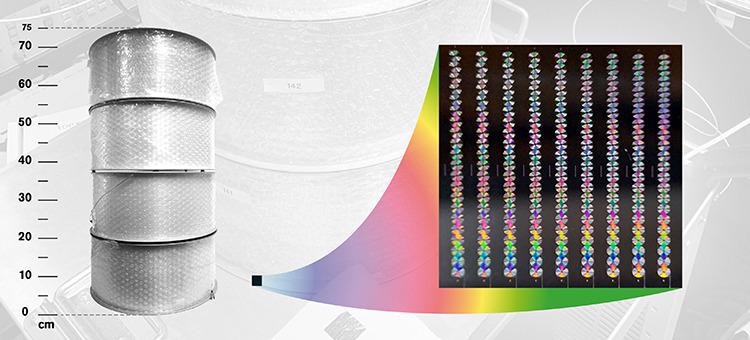Reviewed by Alex SmithSep 22 2021
Researchers at the Chalmers University of Technology demonstrated a distinct optical amplifier with the caliber to revolutionize both space and fiber communication.
 Chalmers’ new amplifier offers high performance, is compact enough to integrate into a chip just millimeters in size, and does not generate excess noise. Image Credit: Yen Strandqvist.
Chalmers’ new amplifier offers high performance, is compact enough to integrate into a chip just millimeters in size, and does not generate excess noise. Image Credit: Yen Strandqvist.
The new amplifier provides high performance, is sufficiently compact to combine into a chip measuring just a few millimeters in size, and most importantly, does not generate any noise.
Optical communication enables information to be sent over a very long distance. The technology is useful in a wide array of applications, like space communication and fiber optic cables for internal traffic. For example, using communication based on light, rather than radio waves it is possible to quickly send high-resolution images from Mars.
This could be compared to switching from older, dial-up internet to modern broadband, with high speed and quality.
Peter Andrekson, Professor and Head, Photonics Laboratory, Department of Microtechnology and Nanoscience, Chalmers University of Technology
The data carried by laser beams can be sent with high speed from a transmitter on the planet to a receiver on Earth or the Moon. Optical communication also enables the usage of the internet around the world, regardless of whether the optical cables under the seabed are used for signal transfer or transmitted wirelessly.
Several optical amplifiers are required along the passage of transmission because the light carrying the information between two points loses power along the way. In the absence of amplifiers, up to 99% of the signal in an optical fiber cable would disappear within 100 km.
A Constant Battle Against Excess Noise
A familiar challenge in optical communication is the excess noise generated by the amplifiers that significantly damage the quality of the signal. Now, researchers from the Chalmers University of Technology have demonstrated an extremely promising solution to a hindrance that existed for decades.
The study was published in the journal Science Advances.
We have developed the world's first optical amplifier that significantly enhances the range, sensitivity and performance of optical communication, that does not generate any excess noise—and is also compact enough to be of practical use.
Ping Zhao, Study Lead Author, and Postdoc, Photonics Laboratory, Chalmers University of Technology
The light amplification in the project is based on the principle known as the Kerr effect. So far, this is the only known technique that amplifies light without causing notable excess noise. The principle has been exhibited before, but not in such a compact format. The previous versions were too bulky to be useful.
The new amplifier can be accommodated in a small chip, just a few millimeters in size when compared to the previous models that have been several thousand times larger.
Tiny, Quiet and with High Performance
Moreover, the new amplifiers provided a level of performance high enough that they can be placed more sparingly. This turns them into a cost-effective choice. They also process in a continuous wave operation rather than a pulsed operation only.
What we demonstrate here represents the first CW operation with an extremely low noise in a compact integrated chip. This provides a realistic opportunity for practical use in a variety of applications. Since it’s possible to integrate the amplifier into very small modules, you can get cheaper solutions with much better performance, making this very interesting for commercial players in the long run.
Peter Andrekson, Research Leader, Chalmers University of Technology
The new results also pave the way for completely new applications in both technologies and science, according to Peter Anderkson.
Anderkson concluded, “This amplifier shows unprecedented performance. We consider this to be an important step towards practical use, not only in communication, but in areas including quantum computers, various sensor systems and in metrology when making atmospheric measurements from satellites for Earth monitoring.”
Journal Reference:
Ye, Z., et al. (2021) Overcoming the quantum limit of optical amplification in monolithic waveguides. Science Advances. doi.org/10.1126/sciadv.abi8150.